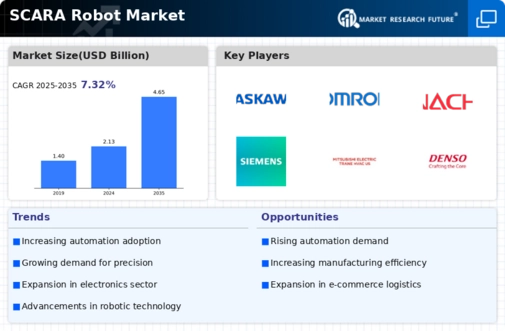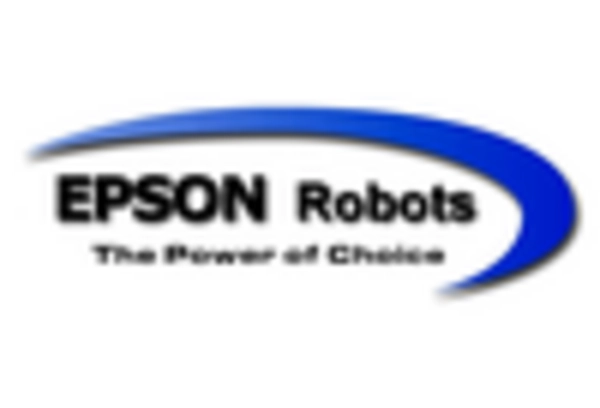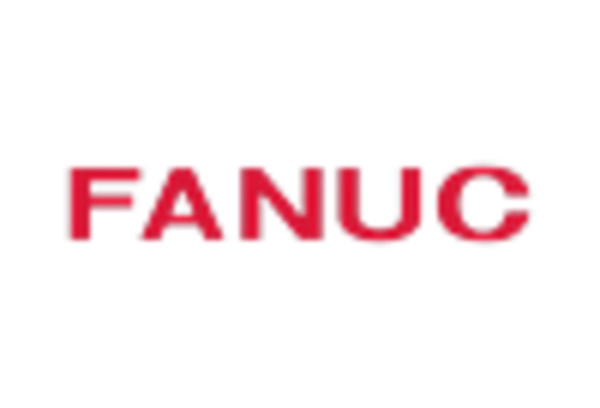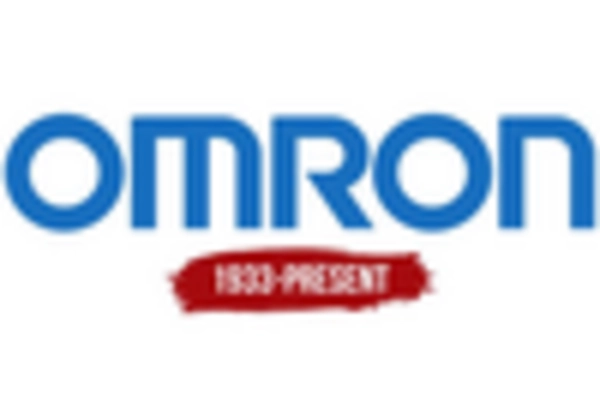Rising Demand for Automation
The SCARA Robot Market experiences a notable surge in demand for automation across various sectors. Industries such as electronics, automotive, and consumer goods increasingly rely on automation to enhance productivity and efficiency. According to recent data, the automation market is projected to grow at a compound annual growth rate of approximately 10% over the next five years. This trend indicates a strong inclination towards adopting SCARA robots, which are known for their precision and speed in assembly tasks. As companies strive to reduce operational costs and improve output quality, the SCARA Robot Market is likely to benefit significantly from this growing demand for automated solutions.
Growing Focus on Quality Control
Quality control remains a pivotal concern in manufacturing, propelling the SCARA Robot Market forward. SCARA robots are increasingly employed in quality assurance processes due to their ability to perform repetitive tasks with high precision. Industries are recognizing that investing in SCARA robots can lead to significant reductions in defects and rework costs. Recent studies indicate that companies utilizing robotic automation in quality control see a decrease in error rates by up to 30%. This focus on maintaining high standards in production processes is likely to drive further adoption of SCARA robots, reinforcing their position within the SCARA Robot Market.
Expansion of E-commerce and Logistics
The expansion of e-commerce and logistics sectors significantly influences the SCARA Robot Market. As online shopping continues to grow, the demand for efficient warehousing and order fulfillment solutions rises. SCARA robots are well-suited for tasks such as picking, packing, and sorting, which are essential in modern logistics operations. The logistics automation market is projected to reach USD 50 billion by 2026, indicating a robust growth trajectory. This trend suggests that the SCARA Robot Market will likely see increased investments as companies seek to optimize their supply chains and enhance operational efficiency in response to the booming e-commerce landscape.
Technological Advancements in Robotics
Technological advancements play a crucial role in shaping the SCARA Robot Market. Innovations in artificial intelligence, machine learning, and sensor technology enhance the capabilities of SCARA robots, making them more efficient and versatile. For instance, the integration of advanced vision systems allows these robots to perform complex tasks with greater accuracy. The market for robotics is expected to reach USD 100 billion by 2025, driven by these technological improvements. As manufacturers seek to leverage cutting-edge technologies, the SCARA Robot Market stands to gain from the increasing sophistication of robotic solutions, which can adapt to various applications and environments.
Sustainability Initiatives in Manufacturing
Sustainability initiatives are becoming increasingly important in manufacturing, impacting the SCARA Robot Market. Companies are under pressure to reduce their carbon footprint and improve energy efficiency. SCARA robots contribute to these goals by minimizing waste and optimizing resource use during production processes. The adoption of energy-efficient robotic systems is expected to grow, with a projected increase in demand for sustainable manufacturing solutions. As organizations strive to align with environmental regulations and consumer expectations, the SCARA Robot Market is likely to benefit from the shift towards more sustainable practices, positioning SCARA robots as a key component in eco-friendly manufacturing.

















Leave a Comment